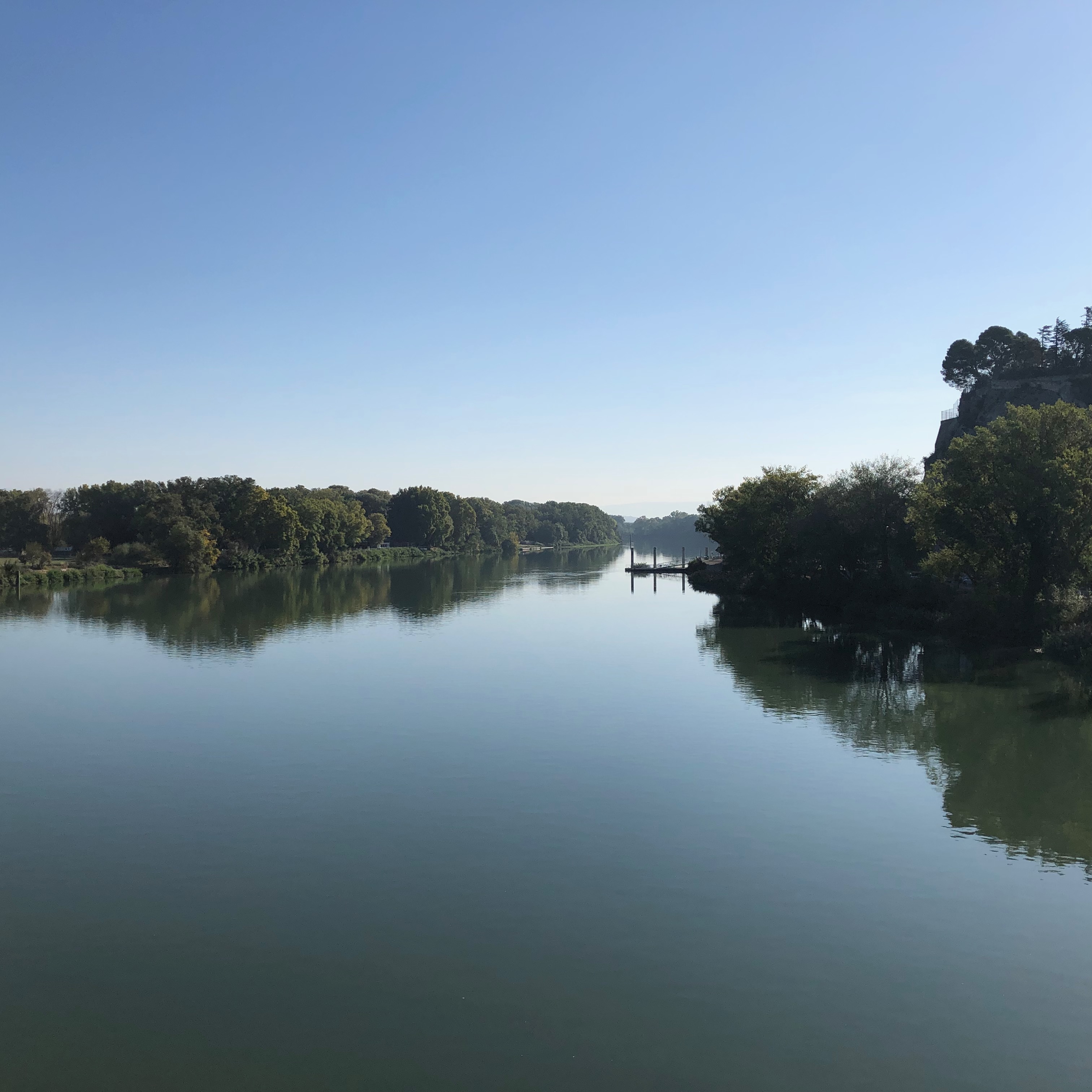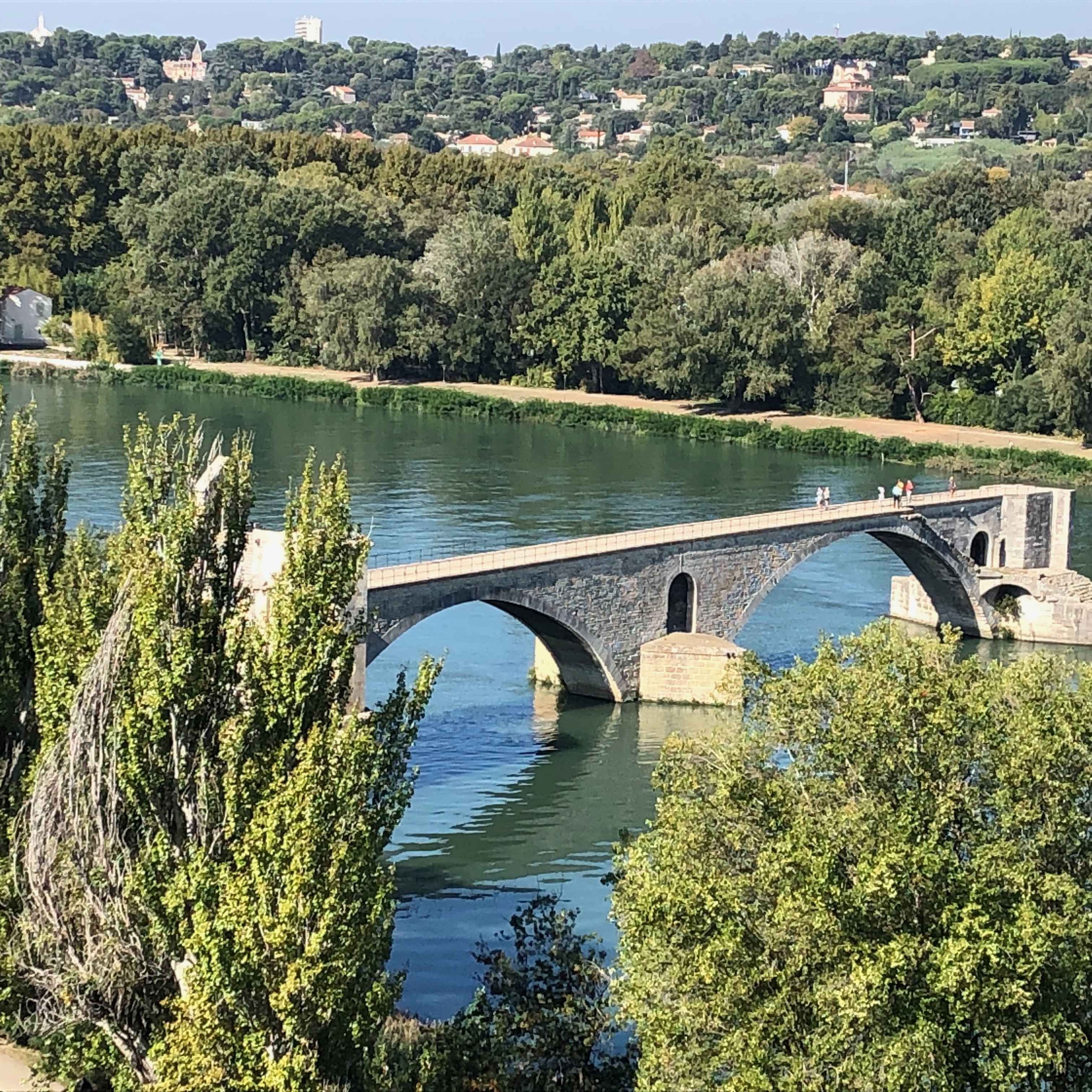
This is the famous Le Pont d’Avignon – although the original name is Le Pont Saint-Bénézet. Also originally the bridge crossed 2 arms of Le Rhône and a small island in between – today only 4 of 22 arches are left.
The bridge ends at the fortification wall – still complete – encircling Old Town Avignon at one of the gates heavily guarded in the past. The walled city is undisturbed disregard any new buildings resp. renovation work done during the centuries. Inside there are some famous relics of the past … best known Le Palais des Papes built during the 14th century when the popes resided in Avignon instead of Rome.
Below is the 1st view of the monumental Pope’s palace we had when arriving at Avignon after dinner when it darkened.
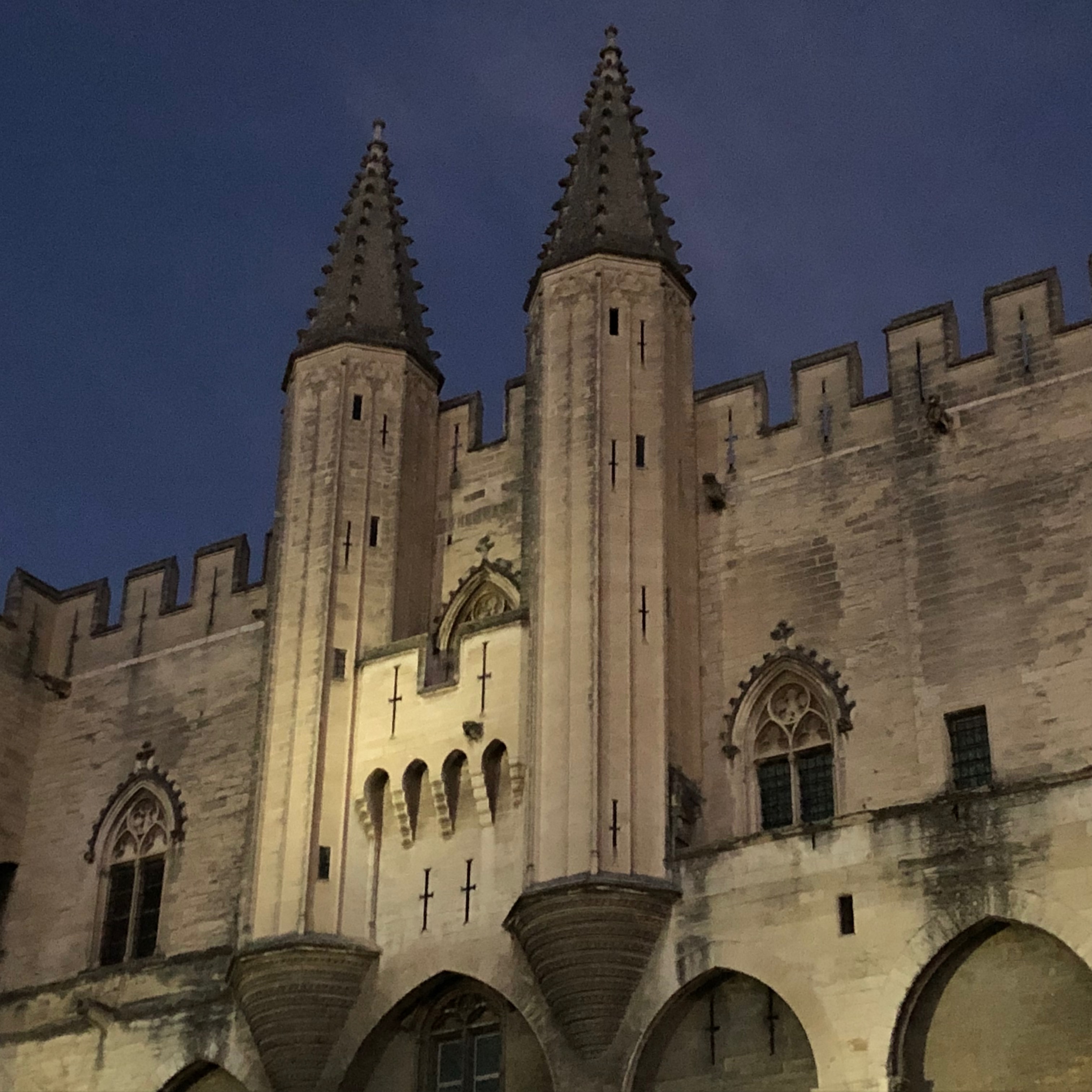
Next morning we started for a visit to the palace. It’s a vast building also heavily guarded. It is recommended to reserve 90 – 120 min for a visit: be sure you’ll need this time to get an impression of the palace.
The walls are high; it feels bone-crashing when at the base level and looking up.
Inside the palace is, of course, a garden enlightening the popes as well as delivering fruit, vegetables and herbs for the papal cuisine.
You also get a glimpse of the nearby cathedral of Avignon. The golden statue of Virgin Mary ist on top of the cathedral.
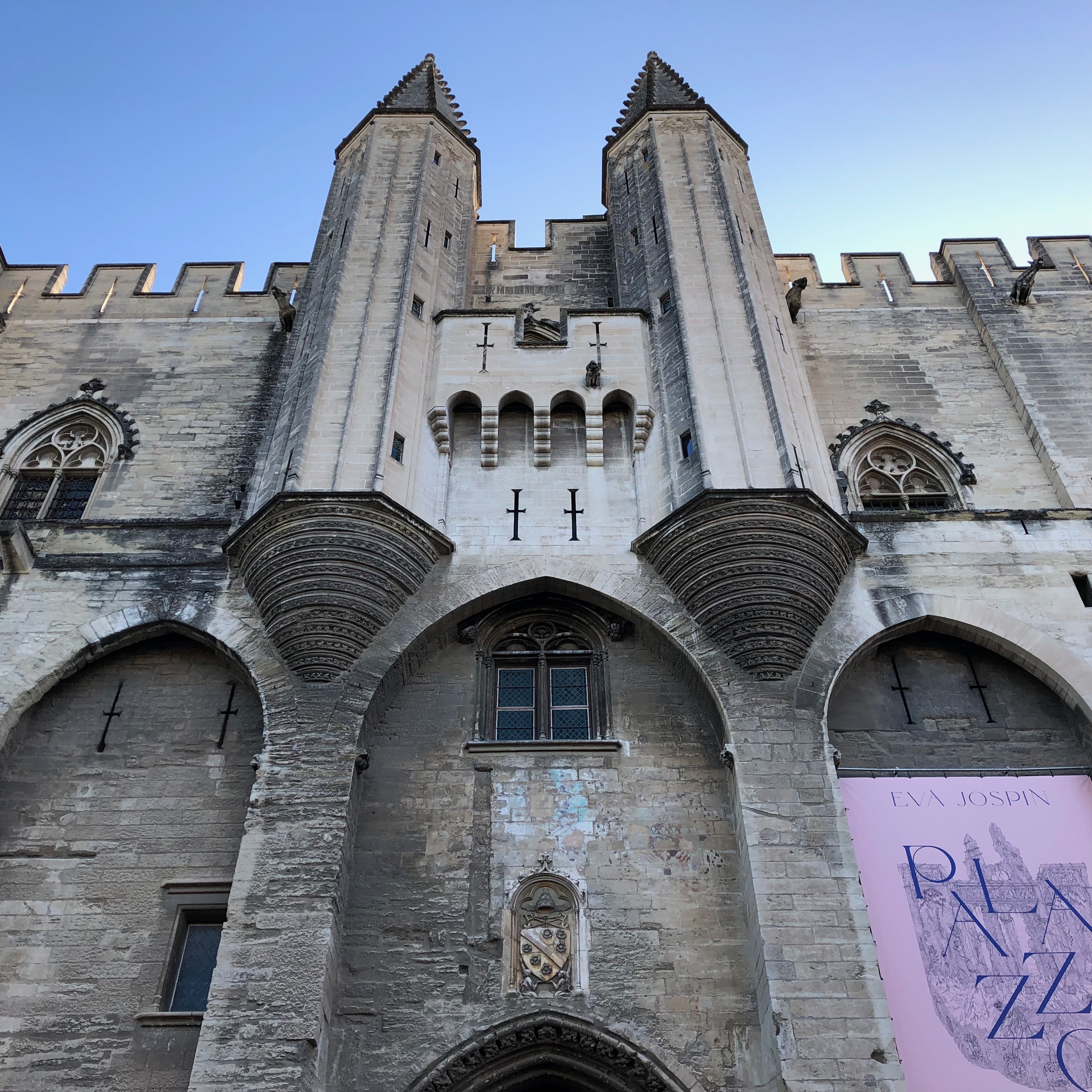
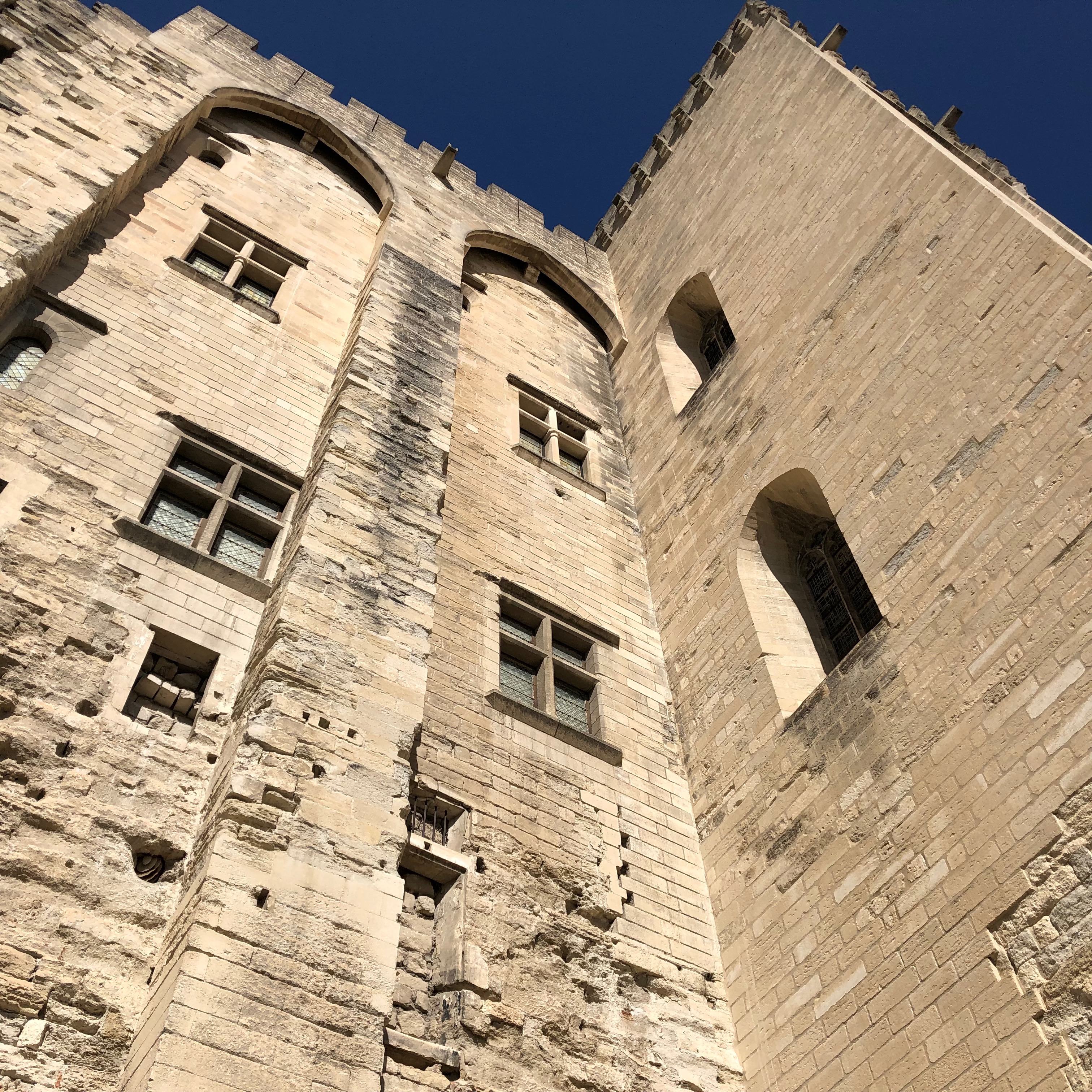
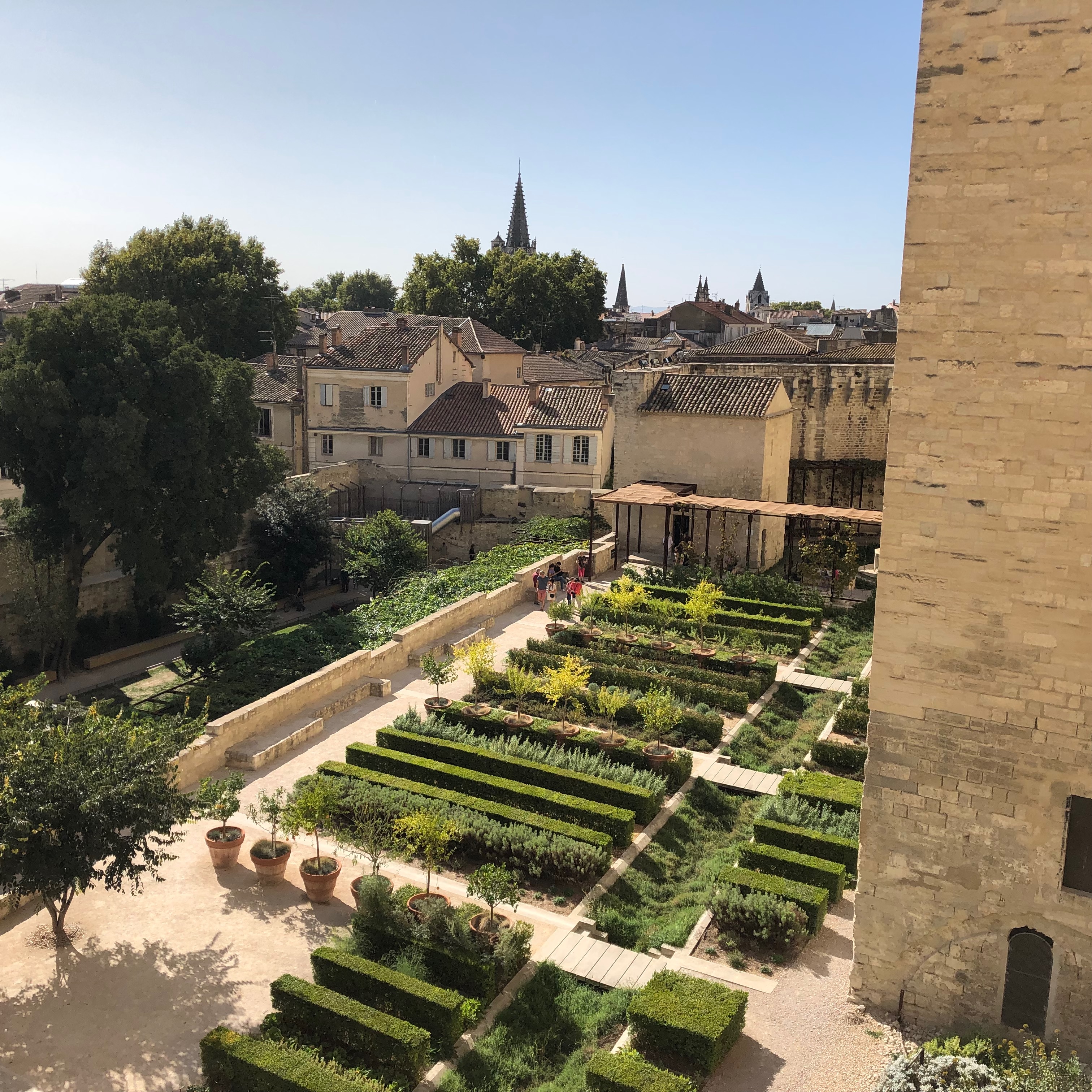
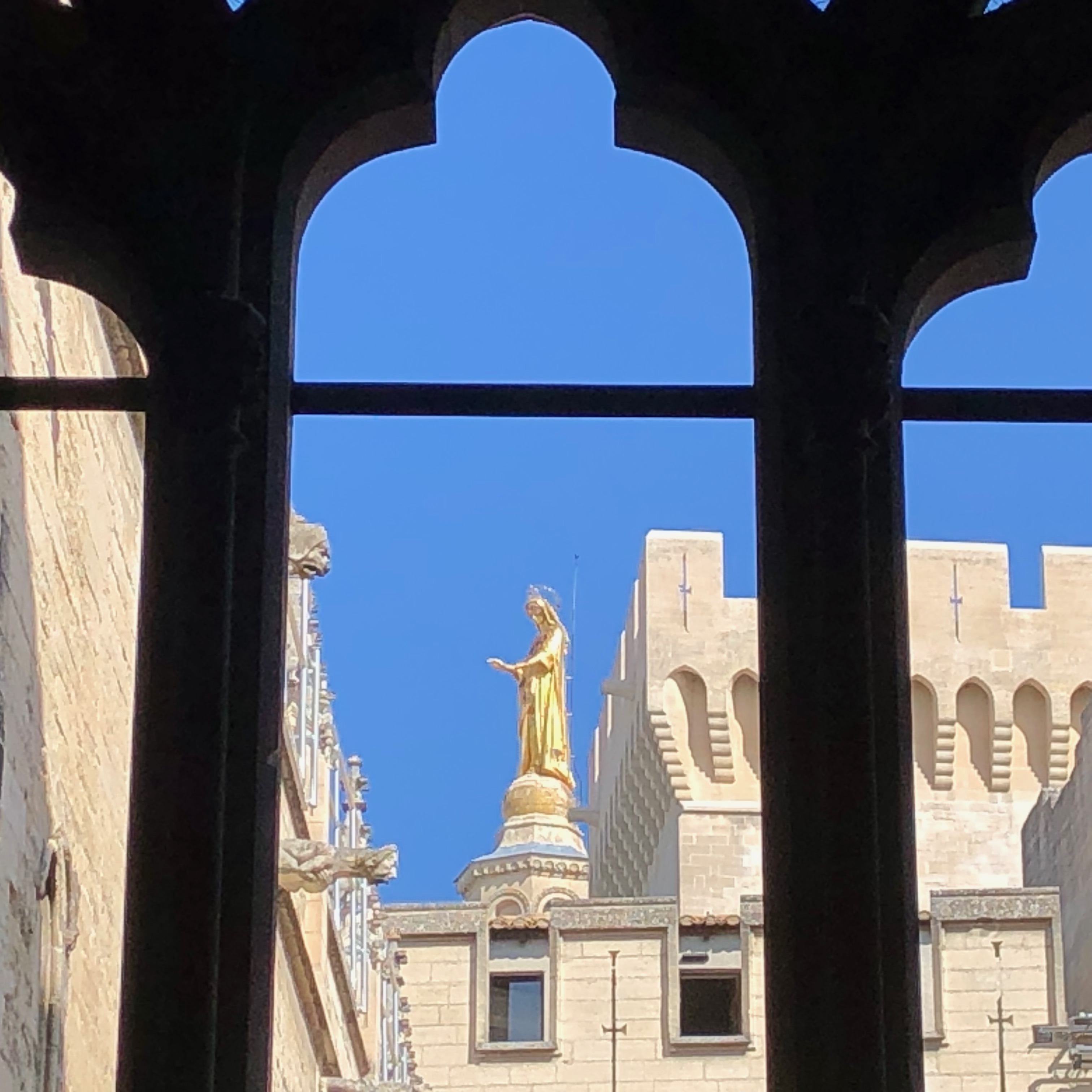
Inside the Pope’s palace there are rooms, rooms, more rooms … There are also some very large rooms like the dining hall (left photo) and the Pope’s chapel (at the right) which inherently resembles more a small cathedral.
Although the building is well maintained not all the details of decoration are restored, but you’ll get an impression about the splendor in the 14th century.
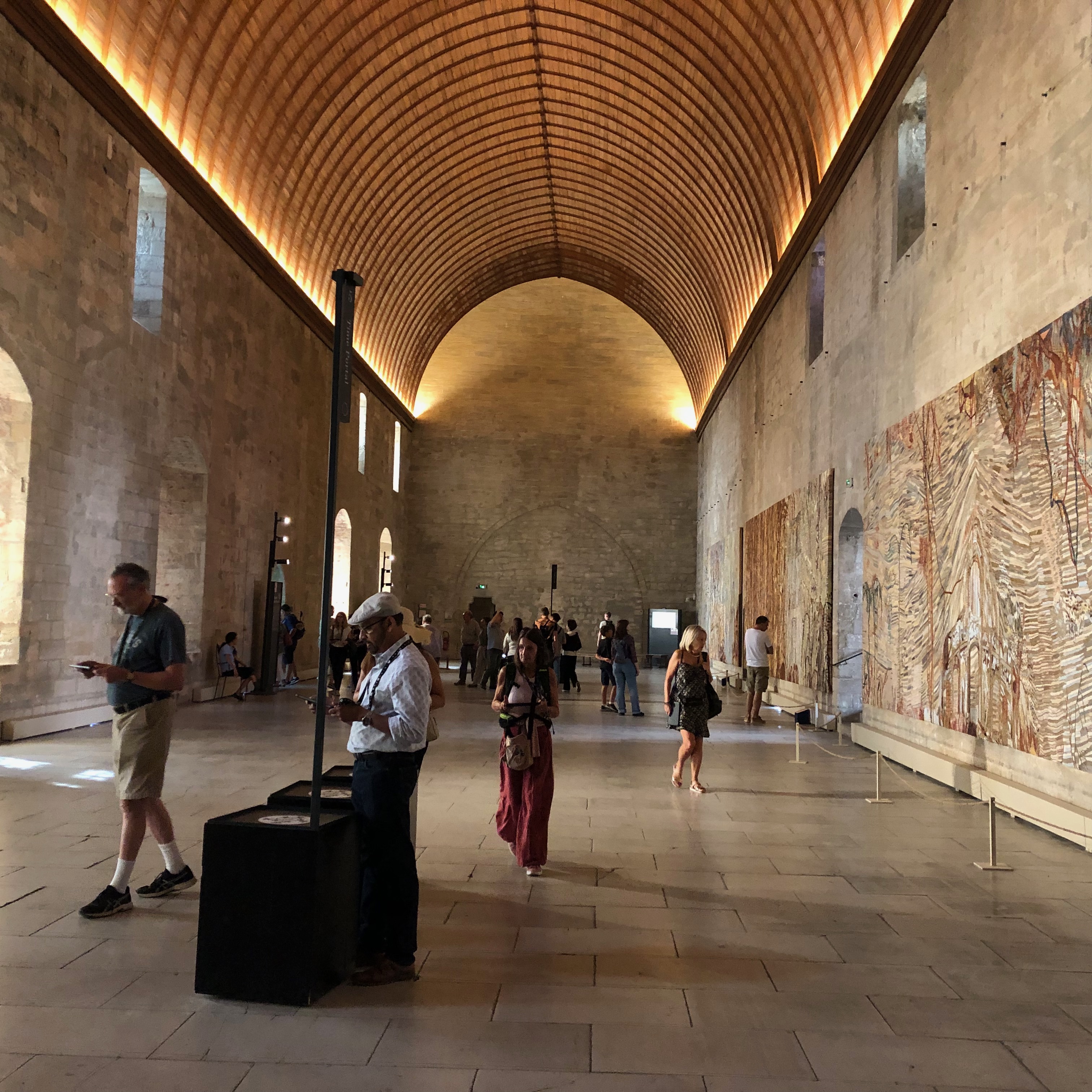
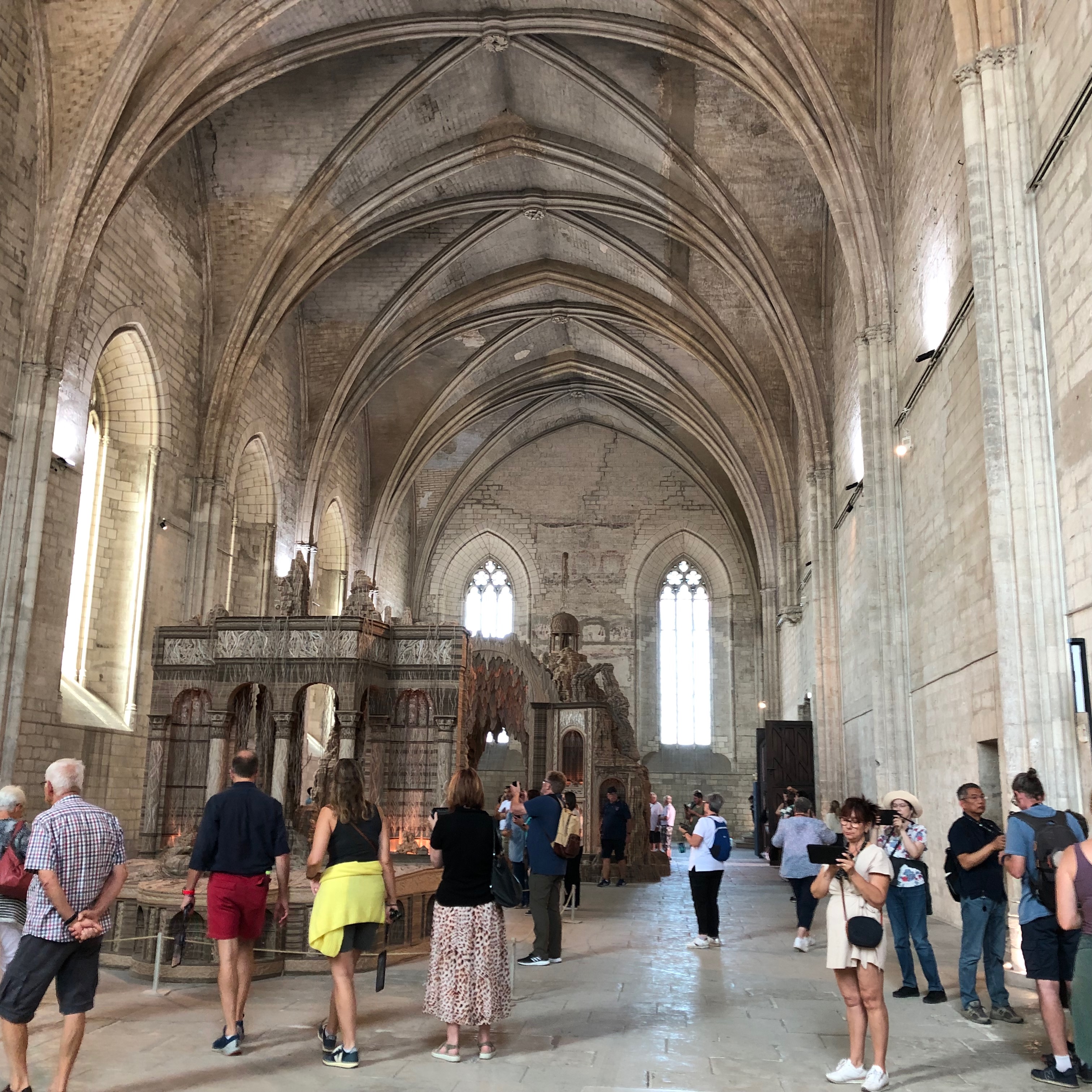
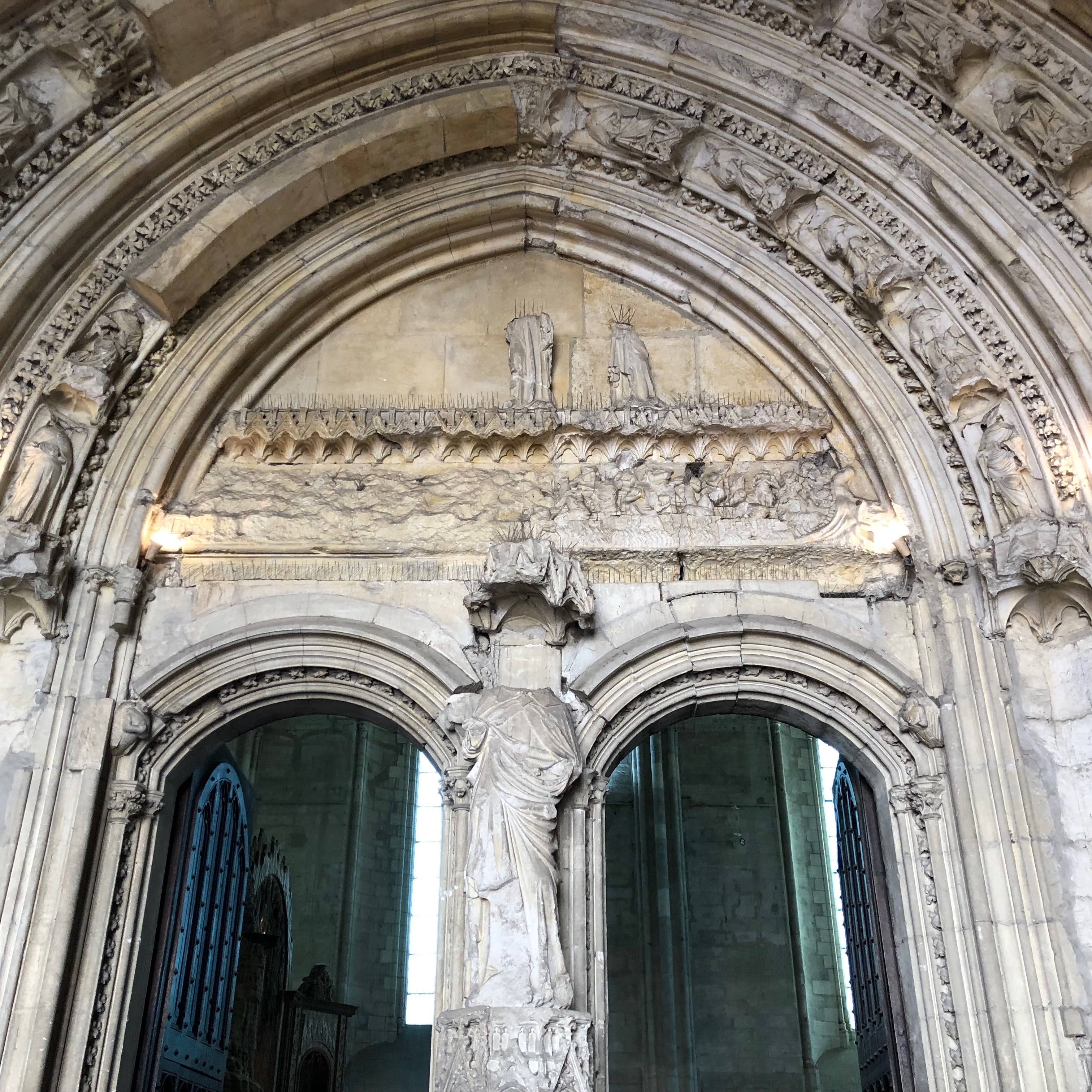
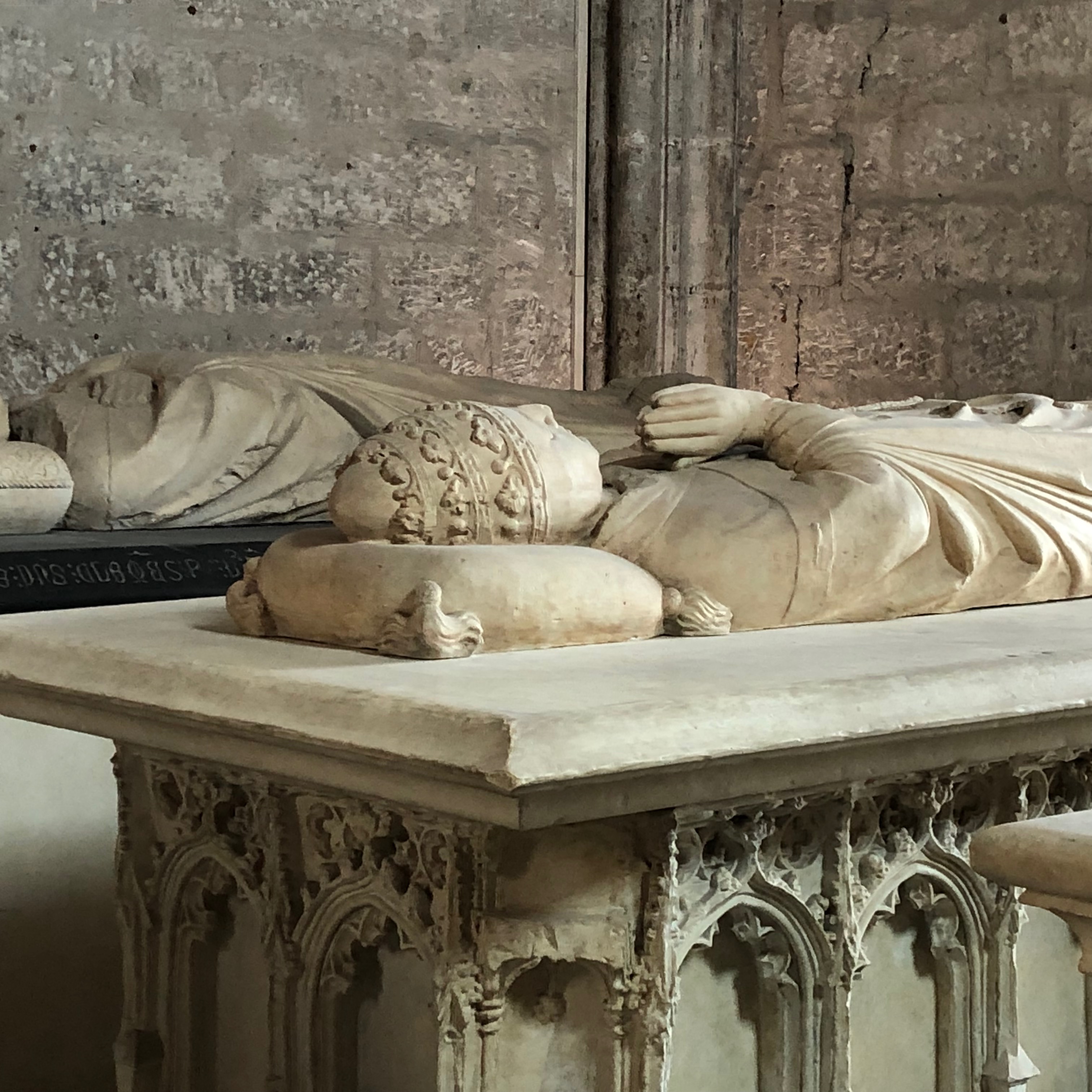
In front of Le Palais des Papes there is a vast place today filled with restaurants and cafés – the photo shows only a small section. The cathedral of Avignon, La Cathédrale Notre-Dame-des-Doms d’Avignon, is next to the Pope’s palace, built in the 12th century – some details show its age while contemporary details were added during the centuries.
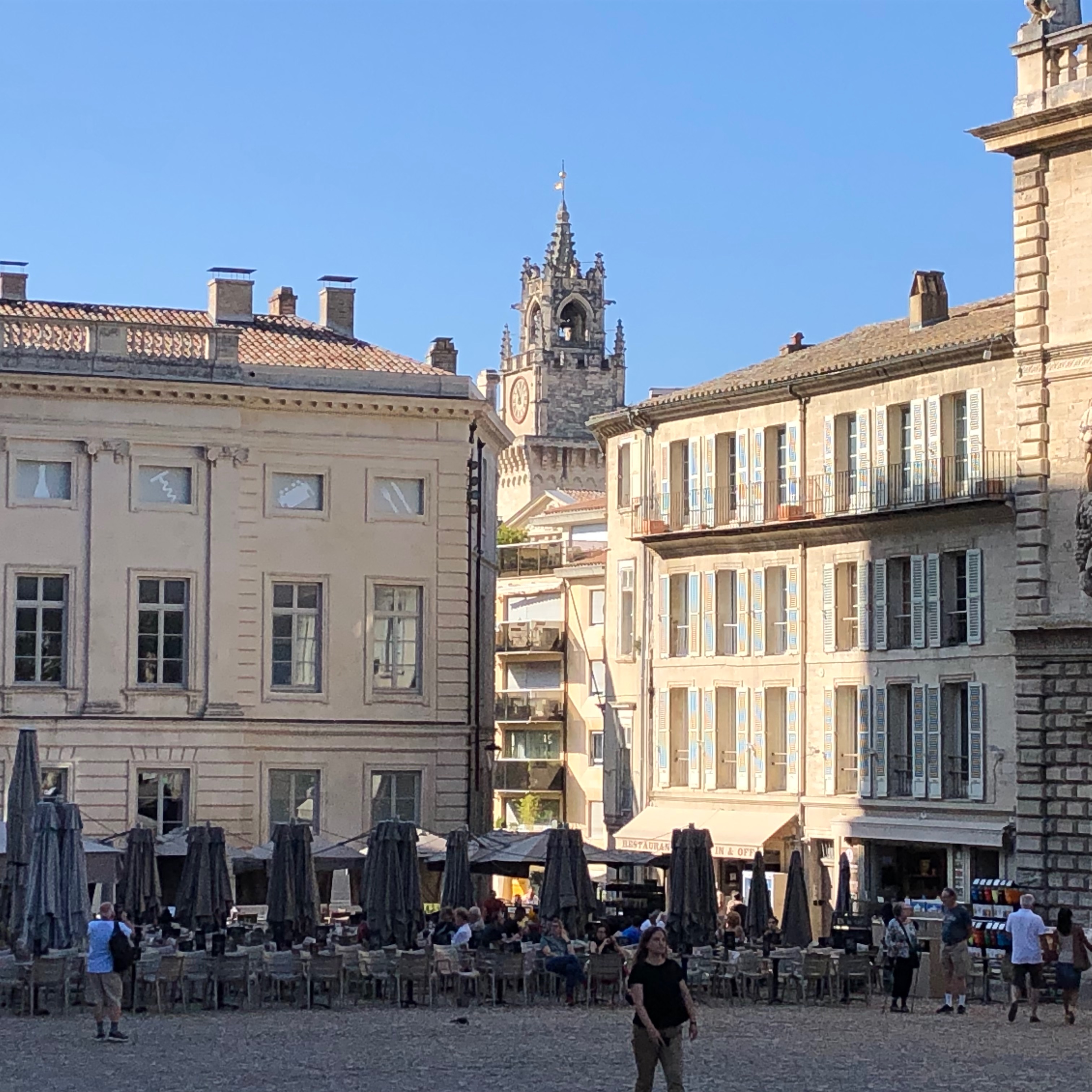
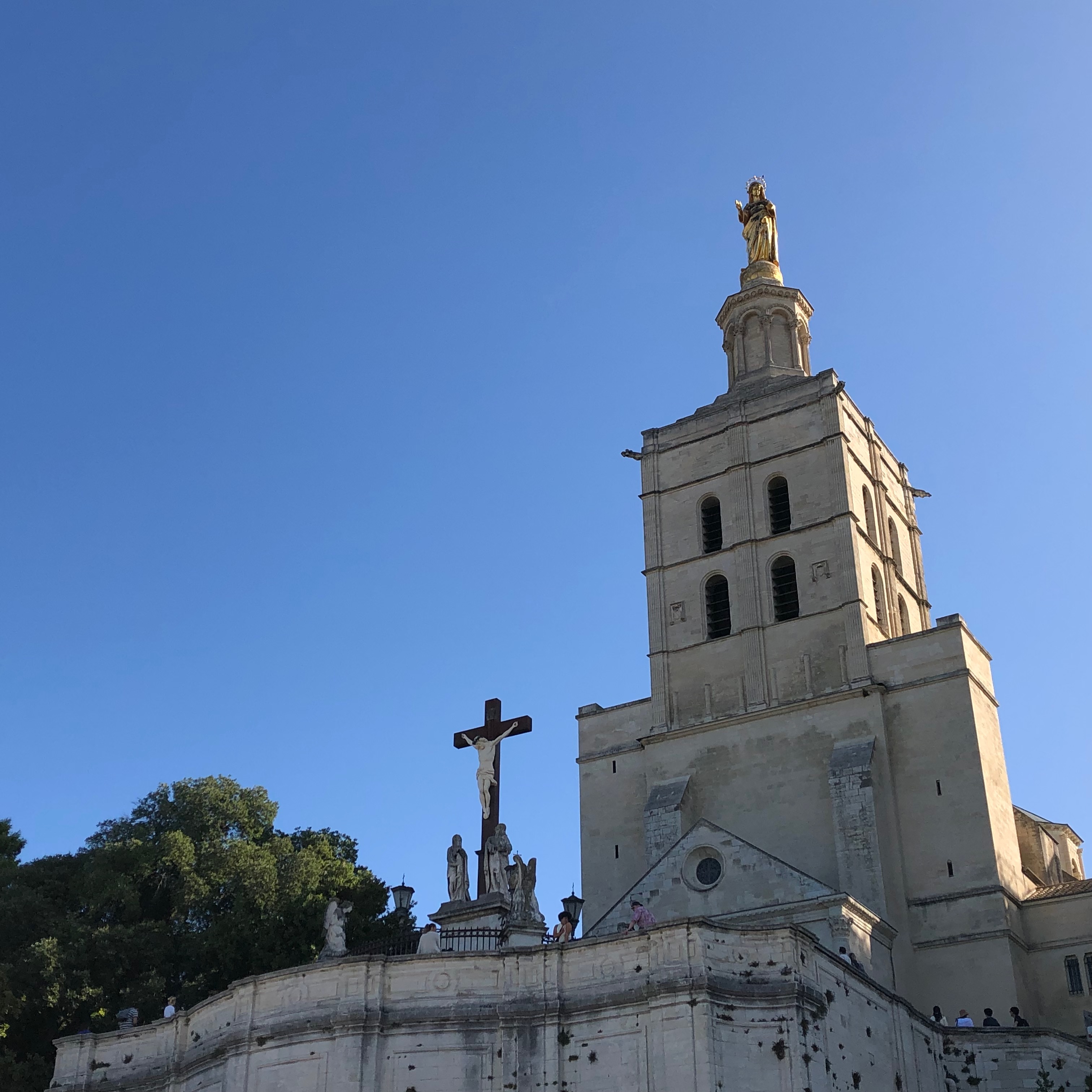
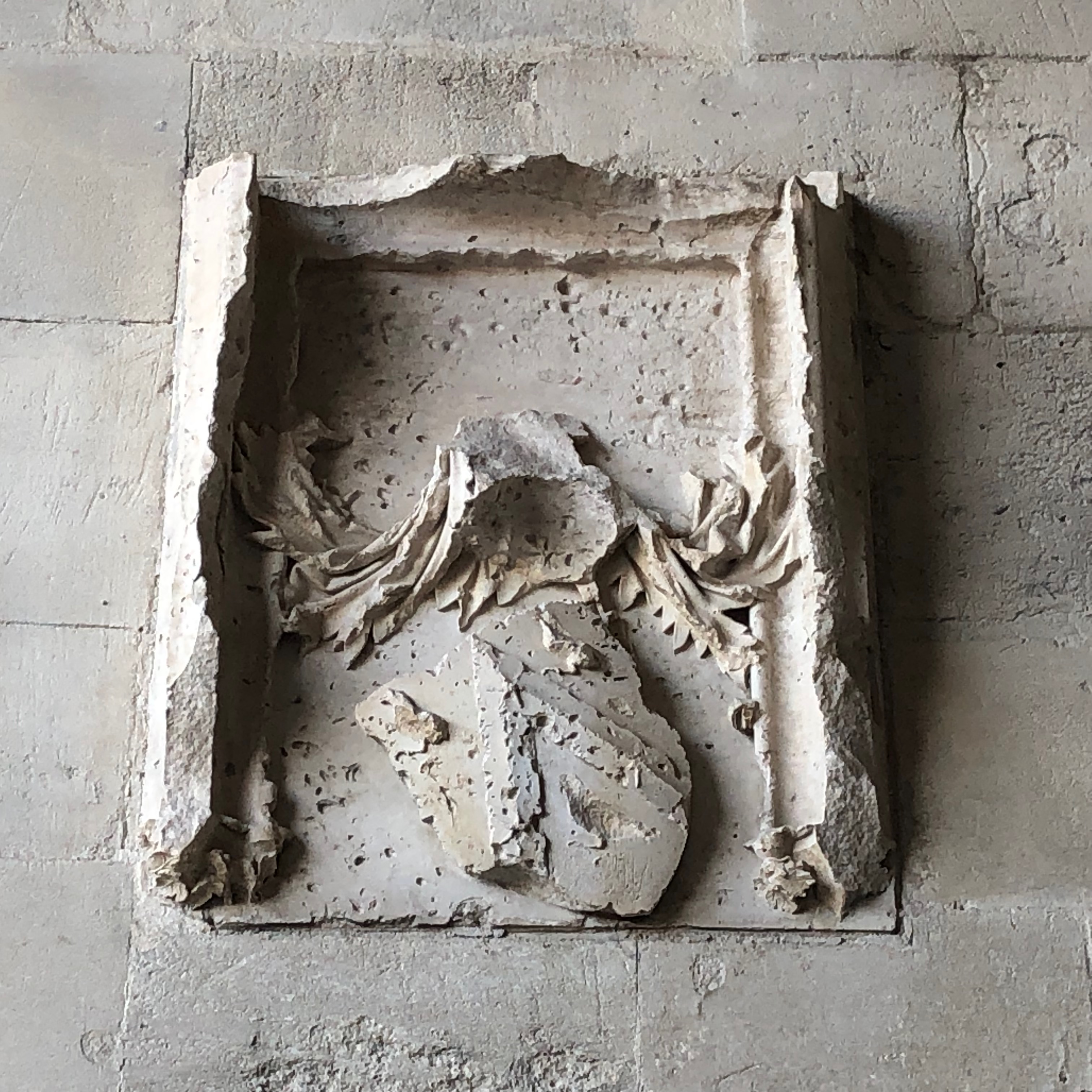
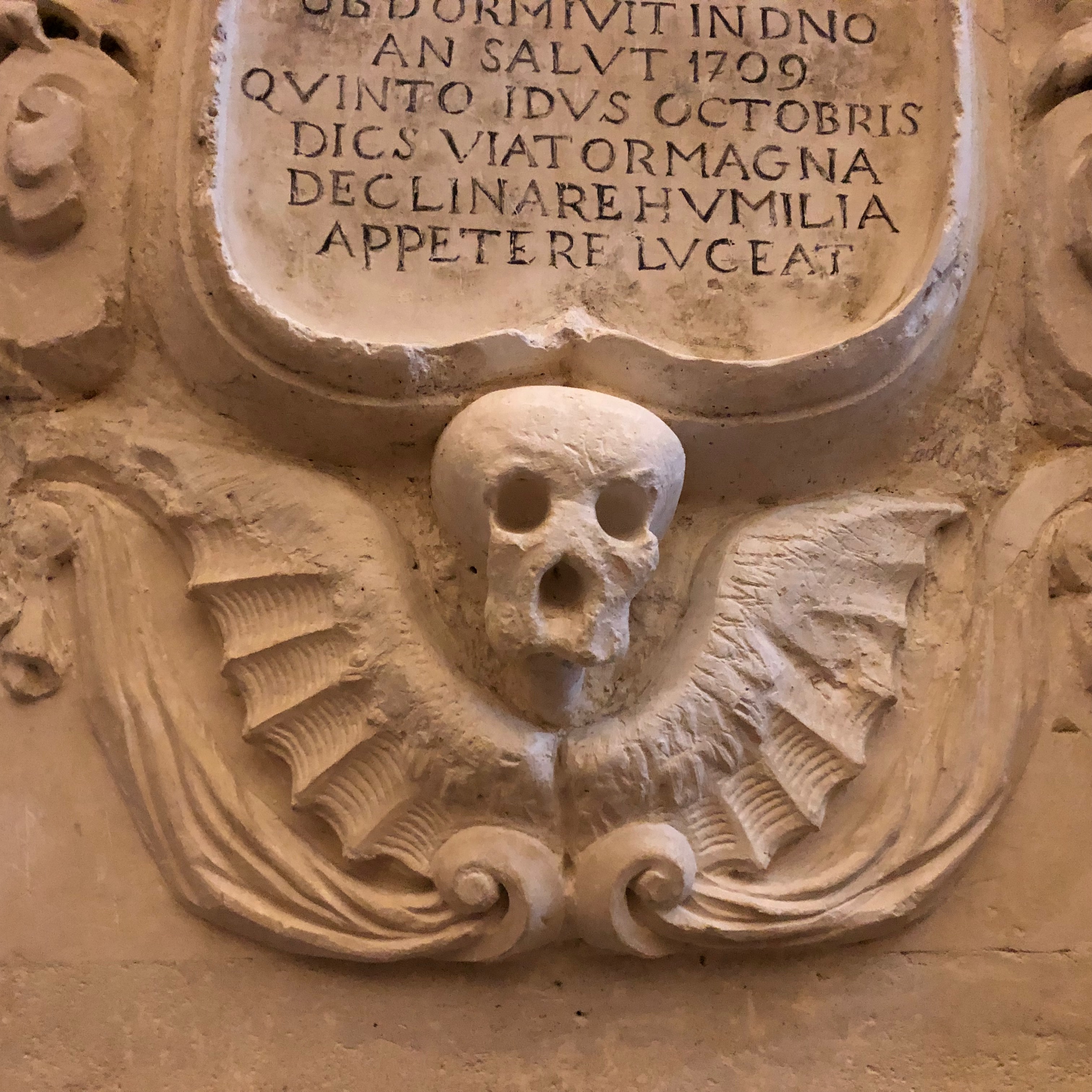
The Pope’s palace is surrounded by a mess of narrow alleyways – then a rather modern city seems to evolve. Modern … like elaborate building of the 19th century. However, there is a mix of old (like from the Middle Ages) to new (from later centuries until nowadays).
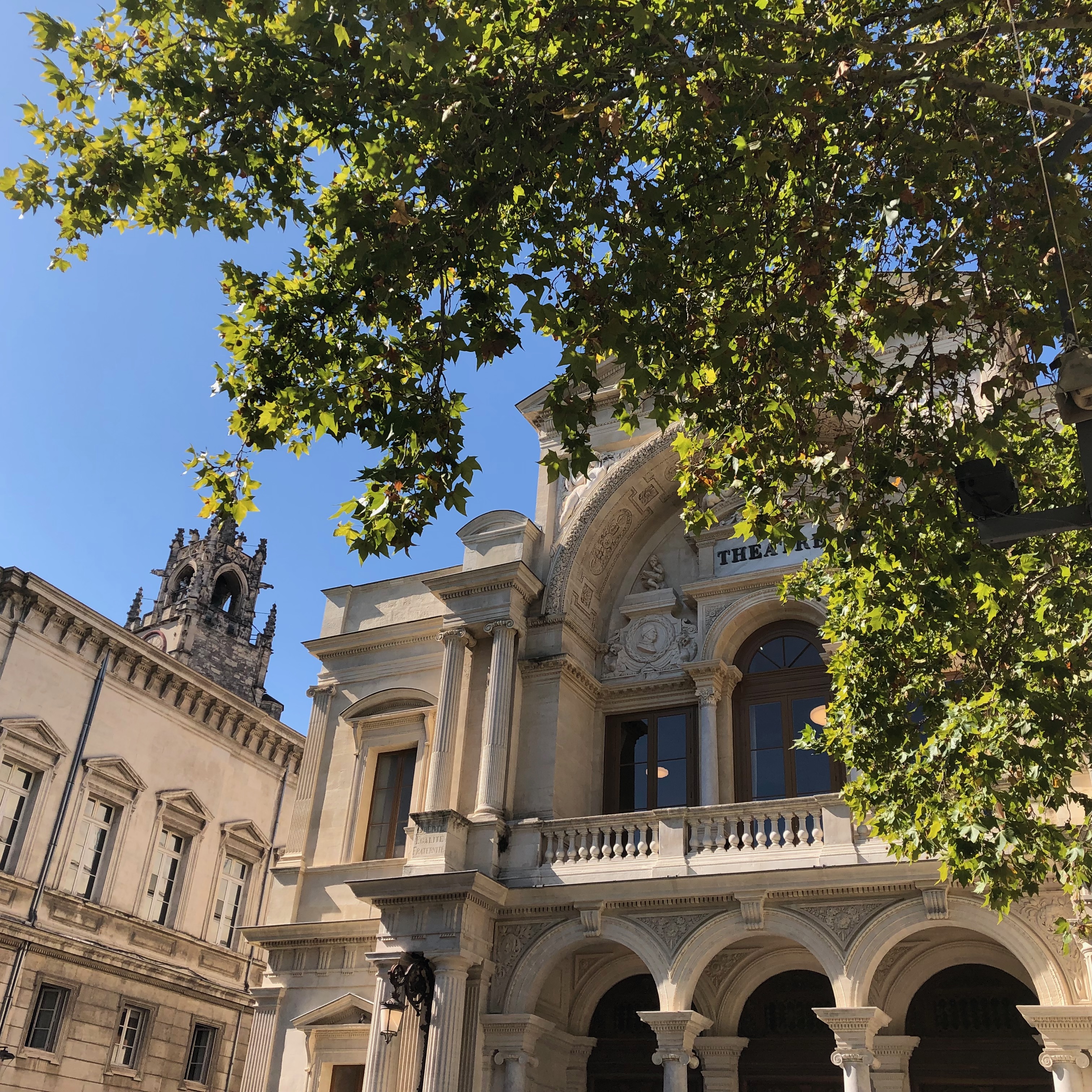
Finally let’s gave another review of Le Rhône.
Avignon is a city for walking and admiring the past. The walled city near Le Rhône invites you also to do some shopping … and there are lots of places with culinary delicacies … not to forget all the outdoor cafés inviting you just to stop, relax and have a café.
